Salmon is delicious food when you cook properly but someone doesn’t know how to cook the fillet salmon recipe right away. Now I’m gonna teach you how to grill salmon with a mouth-watering garlic-lime butter recipe. It might be the acceptable meal of dinner.
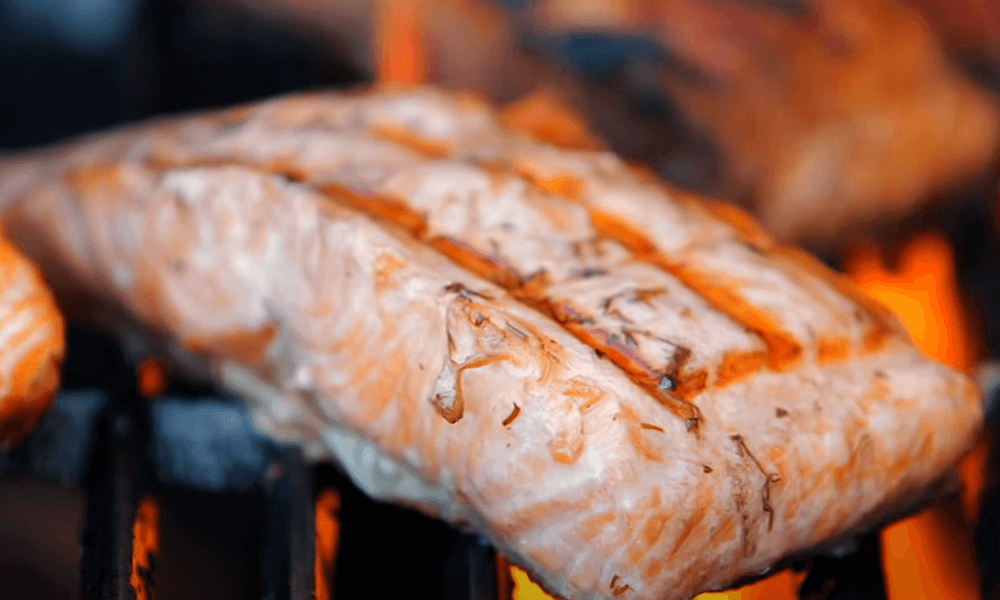
Table of Contents
How To Cook Fillet Salmon Recipe Step By Step
We’re using a two pound salmon filet and when you’re grilling it’s best to get with the skin on. You can run your finger gently over the length of the fillet for the tips of any bones that are left behind count bones finally.
It’s easiest to remove them with a pair of tweezers. Then cut the filet into six even portions. Use a sharp knife to get through that salmon skin or you can use a good pair of kitchen scissors.
 We’re set that aside while we make the garlic lime butter. Finely chop two tablespoons of fresh drill, we’re obsessed with drill and use it wherever we can and it goes really well with salmon.
We’re set that aside while we make the garlic lime butter. Finely chop two tablespoons of fresh drill, we’re obsessed with drill and use it wherever we can and it goes really well with salmon.
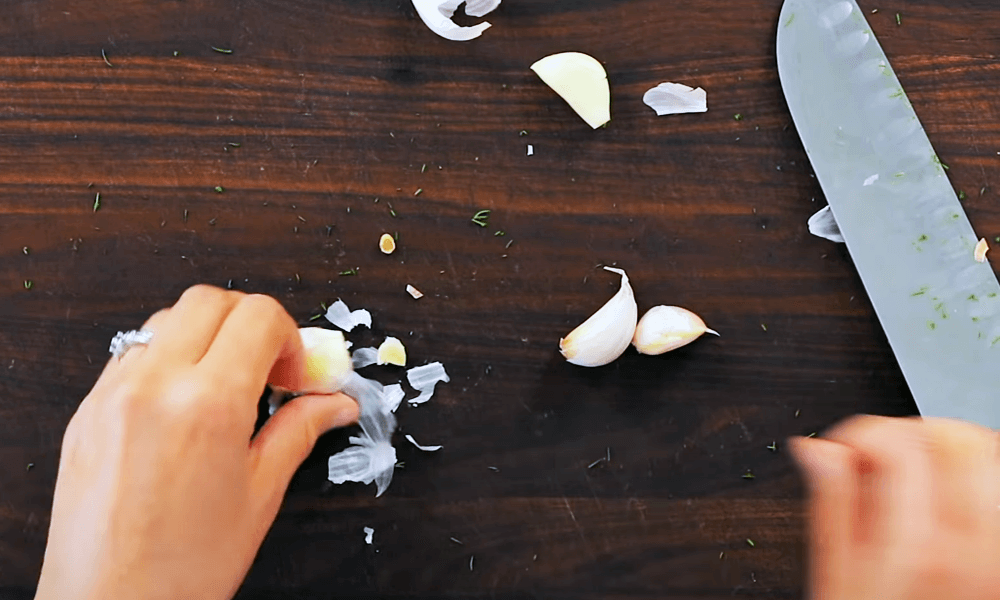 Smash four garlic cloves with the flat side of a knife, smashing the garlic helps to easily remove the skins. It also cracks and opens up the garlic clove so that it can infuse the butter with amazing flavor.
Smash four garlic cloves with the flat side of a knife, smashing the garlic helps to easily remove the skins. It also cracks and opens up the garlic clove so that it can infuse the butter with amazing flavor.
Squeeze two tablespoons of fresh lime juice and make sure you use fresh, because it makes all the difference in this recipe.
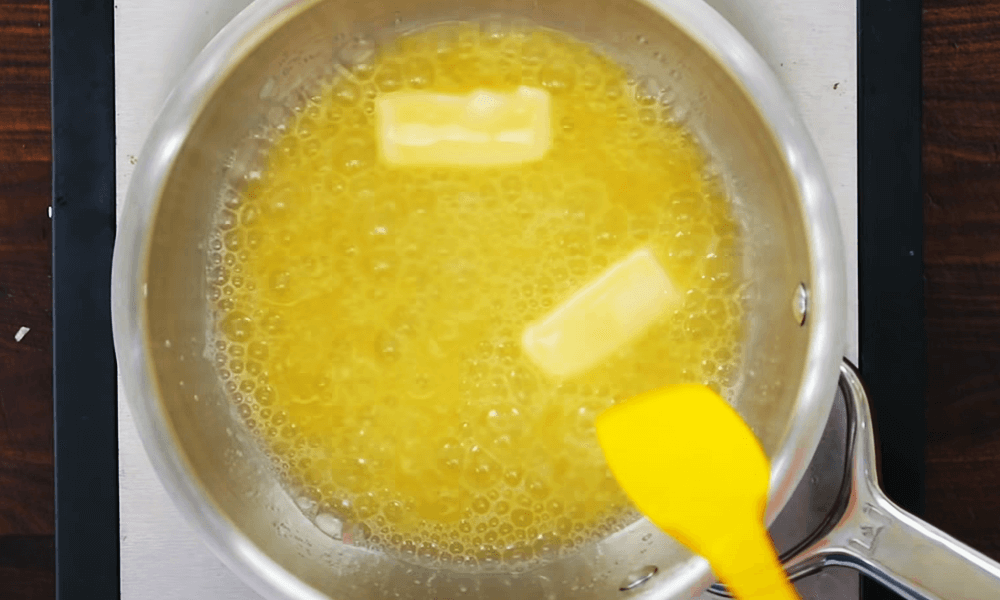
Making this butter is easy peasy and take just a few minutes. In a small sauce pan over medium heat melt one stick or eight tablespoons of unsalted butter.
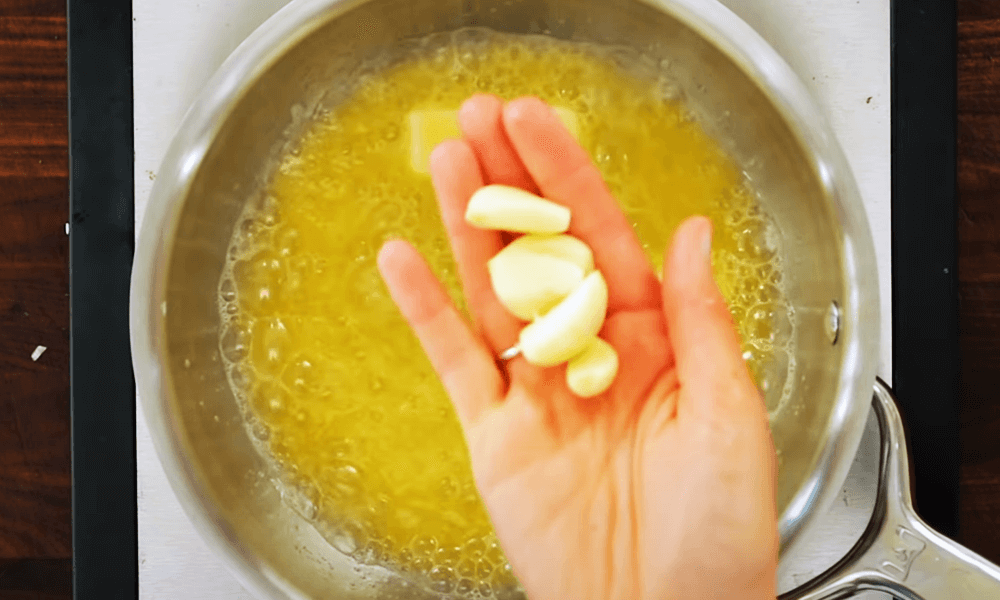 Once butter is melted, add the four smashed garlic cloves along with one tablespoons of salt and ¼ teaspoons of black pepper. Let that simmer for a minute, or until the garlic is fragrant.
Once butter is melted, add the four smashed garlic cloves along with one tablespoons of salt and ¼ teaspoons of black pepper. Let that simmer for a minute, or until the garlic is fragrant.
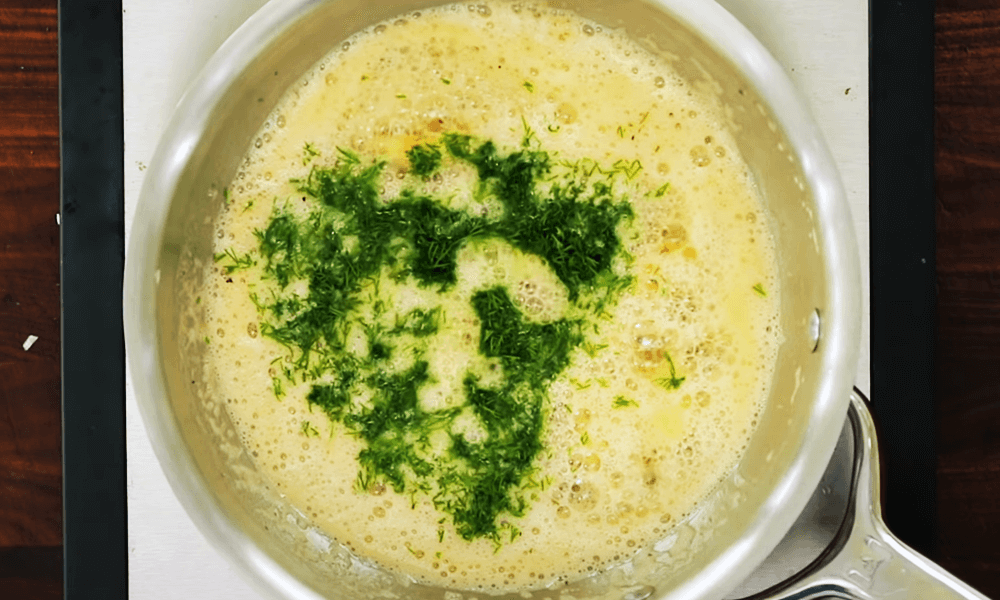 Finally stir in the chopped dill, two tablespoon of fresh lime juice and take it off the heat right away.
Finally stir in the chopped dill, two tablespoon of fresh lime juice and take it off the heat right away.
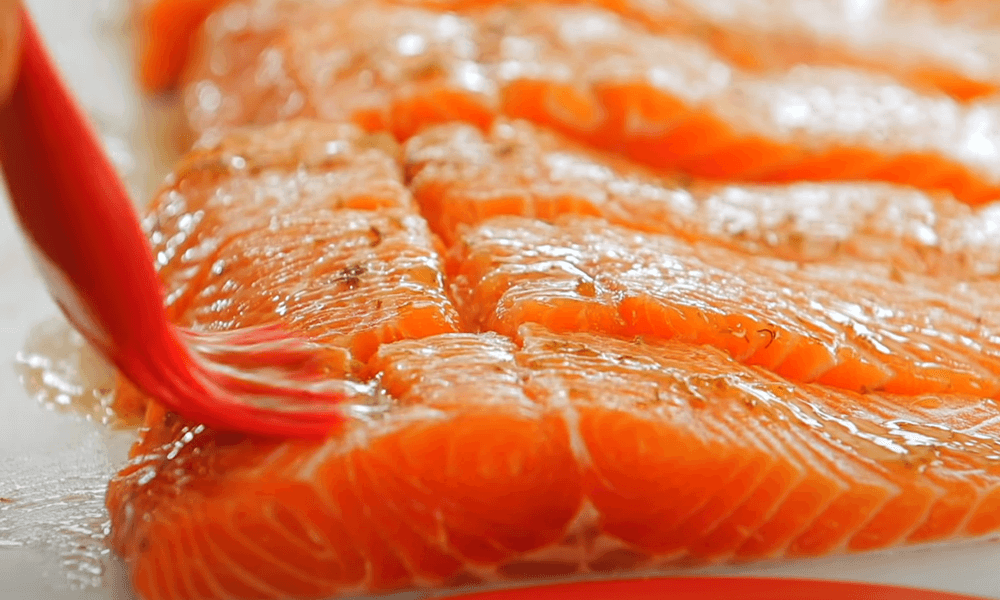 Spoon 1/3 of the butter sauce evenly over your pieces of salmon. Use a brush to spread that evenly over the top and sides of the salmon. Set that aside to marinate and rest while you preheat the grill to medium heat at 350 to 400 degrees Fahrenheit.
Spoon 1/3 of the butter sauce evenly over your pieces of salmon. Use a brush to spread that evenly over the top and sides of the salmon. Set that aside to marinate and rest while you preheat the grill to medium heat at 350 to 400 degrees Fahrenheit.
Now our best tip for keeping salmon from sticking to the grill is to oil the grates. To do this dip a folded paper rowel in high heat cooking oil, and use tongs to rub it on the pre-heated grates.
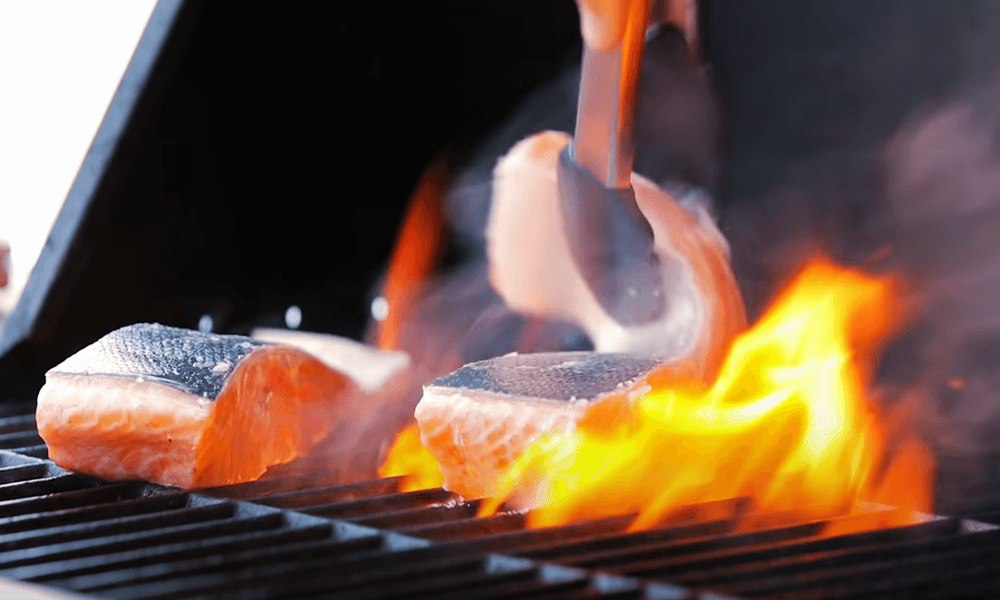 When our grill is preheated to 350 degrees Fahrenheit then we’re gonna place the salmon onto the hot grill skin side up. For safety it’s good idea to use long tongs, or even some oven mitts to perfect your hands in case there are any flare ups.
When our grill is preheated to 350 degrees Fahrenheit then we’re gonna place the salmon onto the hot grill skin side up. For safety it’s good idea to use long tongs, or even some oven mitts to perfect your hands in case there are any flare ups.
 Cover and cook the salmon at 350 degrees Fahrenheit for about three minutes on the first side. Then open the grill and carefully flip the salmon over. Once it’s ready to flip and if you’re having trouble flipping it give it another minute and try again.
Cover and cook the salmon at 350 degrees Fahrenheit for about three minutes on the first side. Then open the grill and carefully flip the salmon over. Once it’s ready to flip and if you’re having trouble flipping it give it another minute and try again.
 Carefully brush on another third of the butter starting at the back just in case there’s any flare ups. Basting the salmon like this infuses great flavor while it grills. Cover and grill for another two minutes, until the internal temperature reaches 140 degrees Fahrenheit.
Carefully brush on another third of the butter starting at the back just in case there’s any flare ups. Basting the salmon like this infuses great flavor while it grills. Cover and grill for another two minutes, until the internal temperature reaches 140 degrees Fahrenheit.
The temperature of the salmon will continue to rise after you take it off the grill. It should get up to the ideal temperature of 137 to 145 degrees Fahrenheit as it rests.
Ingredients Of Grilled Salmon:
- 2 lbs salmon filet skin-on
- 1/2 cup unsalted butter (8 Tbsp)
- 4 cloves garlic smashed (NOT PRESSED)
- 2 Tbsp lime juice
- 2 Tbsp dill chopped, plus more to garnish
- 1 tsp sea salt
- 1/4 tsp black pepper
Nutrition Fact Of Salmon Fish:
Confidential as an oily fish, salmon is calculated to be healthy due to the fish’s sky-scraping protein, high omega-3 fatty acids, and high vitamin D. Salmon is also a source of cholesterol, with a range of 23–214 mg/100 g depending on the species. According to reports in the journal Science, farmed salmon may contain high levels of dioxins.
PCB (polychlorinated biphenyl) levels may be up to eight times higher in farmed salmon than in wild salmon fish, but still well below levels considered dangerous. Nonetheless, according to a 2006 study published in the Journal of the American Medical Association, the benefits of eating even farmed salmon still outweigh any risks imposed by contaminants.
Farmed salmon has high omega 3 fatty acid content comparable to wild salmon. The type of omega-3 present may not be a factor for other important health functions.
Source: en.wikipedia.org
